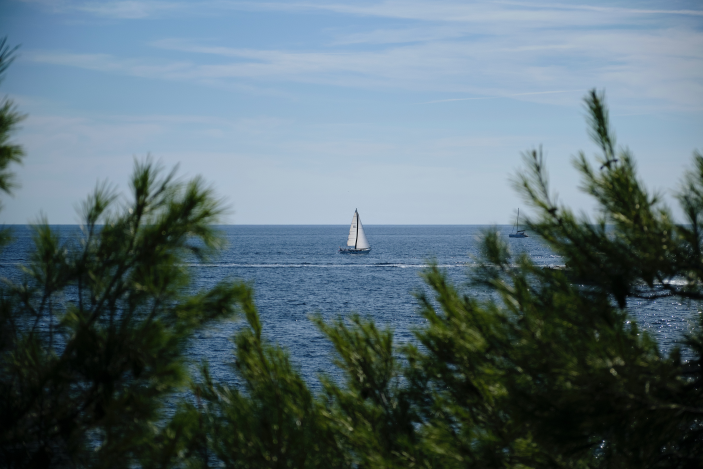Select your language

Weather Forecast for Poreč and Istria: Unveiling the Microclimate Quirks
Weather Forecast for Poreč and Istria: Unveiling the Microclimate Quirks
Croatia is a favorite tourist destination known for its unique blend of natural beauty and rich cultural heritage. Lovers of the summer and sea may choose Istria for their vacation destination. Nestled on the picturesque Adriatic Sea, the region of Istria fascinates both locals and visitors with its beautiful coastline. The Istrian Peninsula is graced by the protective embrace of mountains. This unique geographical location, coupled with its specific topography, gives rise to a Mediterranean climate with mild winters and warm summers.
On the Istrian west coast, you can find charming town Poreč with beautiful beaches, many historical sites and lots of attractions and entertainment content. In order to exploit the most of your available time it is crucial to understand weather conditions of Istria. In particular, the winds play a crucial role in defining your summer experience in Poreč. Thanks to the winds and unique topography, Istria has so many microclimates that the weather can vary from thunderstorm to the sunny breeze in a range within only few kilometers. By paying attention to the winds, both locals and visitors can make informed decisions about beach visits, water sports, and outdoor activities. So, let’s get to know the local winds that shape the weather in Istria.
Bura, the powerful northern wind
The most dominant wind of the Adriatic coast is Bura. It is very powerful wind that emerges from the interior mountain ranges, particularly the Učka mountain range. Locals always say that Bura carries a chill that can bring shivers down your spine.
With speeds reaching up to 220 kilometers per hour (137 mph), Bura is a force to be reckoned with. So we can say that Bura's presence adds an element of drama to Istria's weather, reminding us of the raw power of nature.
Bura often brings refreshing chill even in the hot summers and often dangerous waves. It also brings clear cloudless sky and crystal-clear views of the surrounding landscapes, which makes it favorite wind of photographs.
Jugo, the warm southern wind
In contrast to Bura, Jugo is a warm and humid wind that originates from the south. Flowing from the Mediterranean Sea, it brings with it a unique blend of moisture and tropical warmth. Jugo often accompanies low-pressure systems and can cause heavy rainfall, particularly in southern Croatia. This wind often carries fine dust particles from Sahara, lending an otherworldly tint to the sunlight and occasionally obscuring distant horizons. While it may not possess the raw power of Bura, Jugo's influence is significant, shaping the weather patterns and providing a milder touch to Croatia's climate.
Maestral, gentle sea breeze
In the mornings and evenings you can feel the refreshing sensations and the smell of sea in the air. That is thanks to Maestral, refreshing northwest wind which is typically starts gently blowing in the morning and reaches its peak in the early afternoon. Providing relief from the summer heat, it cools down the coastal regions and offers ideal conditions for water sports enthusiasts and sailors to take to the sea.
Tramontana, Bura’s little sister
Tramontana, like Bura blows from north and brings lower temperatures and turbulent sea. However, it is less powerful than Bura, but sometimes it can be as much dangerous for sailors because it is much more powerful at the open sea. It usually brings clear sky, blows for one day only and it is followed by Bura.
Levant, eastern gentle wind
This is the sailor’s favorite wind and it’s great for the most of water sport activities. However, it is present only in the mornings. If the wind stops later in the morning, it transforms into Maestral. However, if it continues blowing during the midday, it will most probably turn into Jugo which brings moisture and rain.
The winds can be very unpredictable and also hard to identify causing the wheatear forecast unreliable. To ensure the most accurate weather forecast for Poreč and Istria, it is recommended to combine multiple weather forecast apps. Long-term weather forecasts are often prone to errors, so relying solely on them may not result with correct information. Drawing from personal experience, a combination of the following weather apps can provide a precise three-day weather forecast:
Rain Alarm:
This online app proves invaluable in alerting you when rain is approaching. Using nearly real-time radar recordings, it helps you stay ahead of sudden showers, allowing you to plan your outdoor activities accordingly.
Aladin HR:
Developed by the Croatian Meteorological and Hydrological Service, this app is particularly useful for wind predictions. However, it is important to note that due to the specific topography of the Istrian west coast, the app may occasionally provide inaccurate data for Poreč. Exercise caution and cross-reference with other sources when relying on wind forecasts in this area.
Vrijeme Hrvatska XL PRO:
For daily use, this mobile app offers comprehensive and highly accurate weather data. It encompasses all the essential information necessary for planning your activities, giving you confidence in making informed decisions.
By combining these three apps, you can access the most reliable information to plan your activities in Poreč and Istria. Be it beach visits, water sports, or exploring the region's charming towns, having a comprehensive understanding of the weather conditions is vital. However, it's important to remain aware of the microclimate peculiarities and the potential for rapid weather changes. And remember, if it’s raining above you, it might be sunny just few kilometers next to you.

 EN
EN  HR
HR  DE
DE  IT
IT  PL
PL